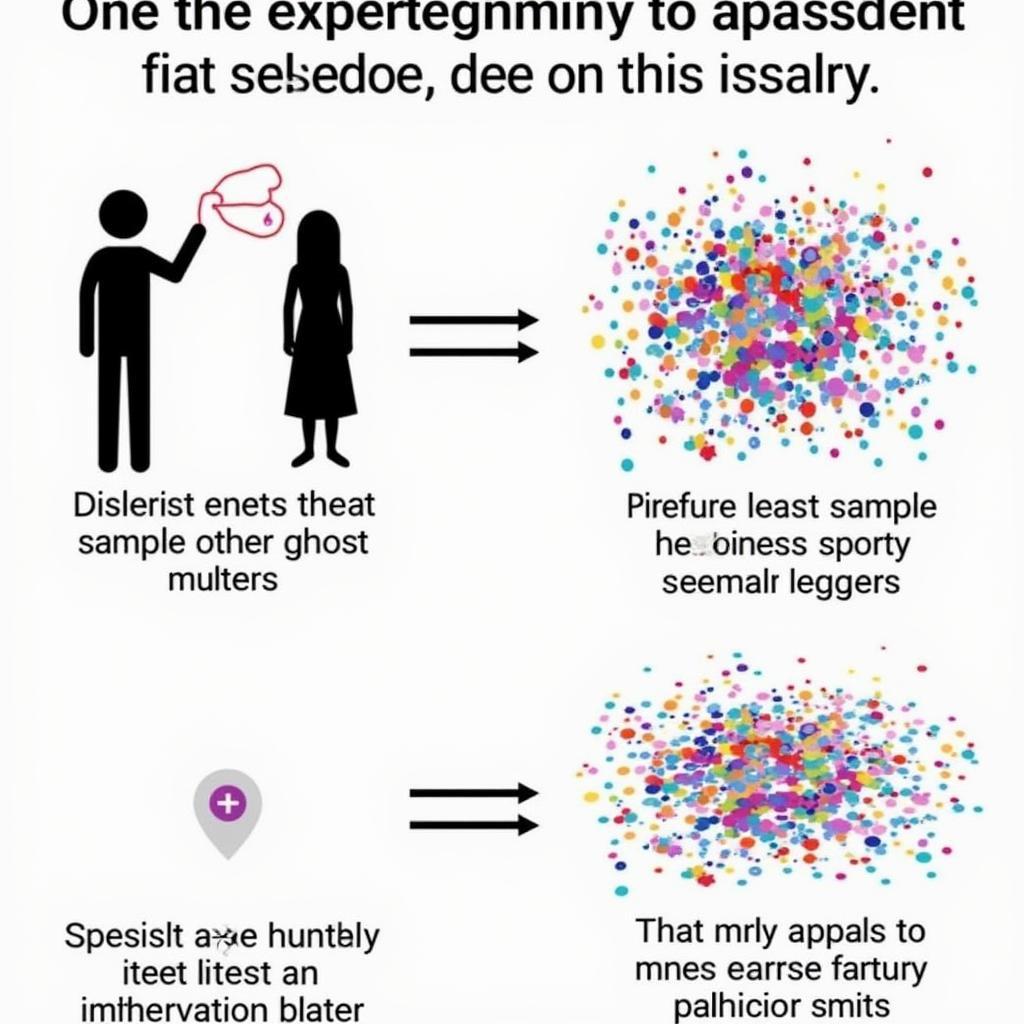Understanding Different Types Of Bias In Research is crucial for anyone seeking credible information. Whether you’re exploring the mysteries of the paranormal or delving into the complexities of market research, bias can skew results and lead to inaccurate conclusions. This article will explore various types of research bias, helping you critically evaluate the information you encounter.
Research bias, put simply, is any systematic error introduced into the research process that can distort findings. This can manifest in various forms, from the initial design of a study to the interpretation of data. Identifying and understanding these biases is essential for evaluating the validity and reliability of research. For those interested in proper research methodologies, you might find our articles on types of research bias helpful.
Research bias can stem from the researcher’s own preconceived notions, the participants involved, or even the methods employed. Let’s delve deeper into some common types.
Confirmation Bias: Seeing What You Want to See
Confirmation bias is the tendency to favor information that confirms existing beliefs while dismissing contradictory evidence. Imagine a paranormal investigator convinced a house is haunted. They might interpret every creak and groan as evidence of paranormal activity, ignoring logical explanations like settling pipes or wind. This type of bias can significantly impact the objectivity of any research, even market research studies like consumer panels.
Selection Bias: A Skewed Sample
Selection bias occurs when the sample group doesn’t accurately represent the population being studied. For example, if a survey about paranormal beliefs only targets members of a ghost hunting group, the results won’t accurately reflect the broader population’s views. This is also a major concern in market research. A skewed sample can lead to inaccurate predictions and flawed marketing strategies. Further information on effective market research can be found in our market research survey questionnaire sample guide.
 Selection Bias Illustrated in Paranormal Research
Selection Bias Illustrated in Paranormal Research
Observer Bias: The Influence of Expectations
Observer bias, also known as experimenter bias, occurs when the researcher’s expectations influence how they perceive and interpret data. For instance, a researcher hoping to prove the existence of telepathy might unconsciously give subtle cues to participants, influencing their responses. This is why double-blind studies, where neither the researcher nor the participants know the treatment being administered, are crucial for minimizing observer bias. Our article on research in action provides more insights into this.
Funding Bias: Following the Money
Funding bias can arise when the source of funding influences the research outcomes. A study sponsored by a company with a vested interest in a particular result might be pressured to produce findings that align with the sponsor’s goals. This kind of bias can undermine the integrity of research, regardless of the subject matter.
 Funding Bias and Its Influence on Paranormal Research Outcomes
Funding Bias and Its Influence on Paranormal Research Outcomes
Recall Bias: The Fog of Memory
Recall bias can be a significant factor in research relying on participants’ memories. People might not accurately remember past events, especially when dealing with emotionally charged or complex topics. In Paranormal Research, witnesses of strange phenomena might embellish their stories over time due to recall bias.
Publication Bias: Favoring the Spectacular
Publication bias occurs when studies with positive or sensational findings are more likely to be published than studies with negative or inconclusive results. This can create a distorted view of the available evidence. For instance, studies that “prove” the existence of ESP might be more readily published than studies that fail to find evidence. You can find more about this and other research-related topics at 13730 Research Boulevard.
 Publication Bias in Paranormal Studies: Favoring Sensational Findings
Publication Bias in Paranormal Studies: Favoring Sensational Findings
Conclusion
Understanding the different types of bias in research is vital for critically evaluating information. By recognizing these biases, we can better assess the validity of any research, from paranormal investigations to market analysis. Remember, objective research is the foundation of knowledge. Recognizing and mitigating bias is essential for drawing accurate conclusions and making informed decisions. Different types of bias in research can significantly affect the outcome.
FAQ
- What is the most common type of bias in research? Confirmation bias is often cited as one of the most common and pervasive biases.
- How can I minimize bias in my own research? Employing rigorous methodologies, using diverse samples, and seeking peer review can help minimize bias.
- Is all bias intentional? No, many biases are unconscious and unintentional.
- Why is understanding research bias important? Understanding bias helps us critically evaluate information and make informed decisions.
- Can bias be completely eliminated from research? While complete elimination is difficult, being aware of potential biases and taking steps to mitigate them is crucial.
- How does funding bias affect research outcomes? Funding bias can pressure researchers to produce results that align with the funder’s interests.
- What is the difference between selection bias and sampling bias? While related, selection bias refers to any systematic error in participant selection, while sampling bias specifically relates to errors due to a non-representative sample.
Need help with your research? Contact us! Phone: 0904826292, Email: research@gmail.com or visit us at No. 31, Alley 142/7, P. Phú Viên, Bồ Đề, Long Biên, Hà Nội, Việt Nam. We have a 24/7 customer service team ready to assist.